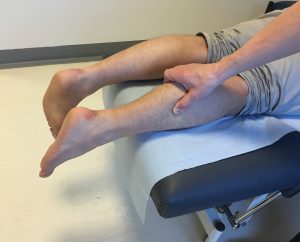
The Simmonds test, also known as the Thompson test, is a clinical assessment tool used by podiatrists and other healthcare professionals to evaluate the integrity of the Achilles tendon in the foot and ankle. The test is named after the British surgeon, Sir William John Simmonds, who first described the technique in the early 20th century.
During the Simmonds test, the patient is asked to lie prone (face down) with the feet hanging off the edge of a table or examination bed. The examiner then squeezes the calf muscle with one hand while observing the movement of the foot with the other hand.
If the Achilles tendon is intact, the foot should plantar flex or point downwards when the calf muscle is squeezed. However, if the Achilles tendon is ruptured, there will be no movement of the foot, indicating a complete tear of the tendon.
The Simmonds test can be useful in diagnosing Achilles tendon ruptures, which can occur as a result of overuse injuries or trauma to the foot and ankle. Treatment options for Achilles tendon ruptures may include immobilization with a cast or brace, physical therapy, and in some cases, surgery to repair the torn tendon.
Overall, the Simmonds test is a simple, non-invasive clinical tool that can provide valuable information about the integrity of the Achilles tendon in the foot and ankle, and help guide treatment decisions for a range of foot and ankle conditions.
